Rare Rides Icons: The History of Stutz, Stop and Go Fast (Part V)

We pick up our Stutz coverage again today, in the mid-late Twenties. The company saw its financial situation worsen around the middle of the decade, just as it launched the new Vertical Eight series of cars. More expensive than ever before and more powerful, the new Stutz luxury motorcars weren’t without fault. Though superbly built, they had engineering issues with their hydraulic four-wheel braking system that the company couldn’t seem to sort out.
The brake issues damaged the company’s reputation but didn’t ruin it. And Stutz’s high-performance cars continued in their racing tradition with a second-place finish at LeMans. But Stutz was still losing money and needed to invest in new businesses and technologies to stay afloat. Let’s talk about delivery trucks and faux leather finishes.
The delivery truck in question was the Pak-Age-Car. Founded in Chicago in 1925, Pak-Age-Car was a brand of delivery trucks owned by a firm called Mechanical Manufacturing Company. The idea behind the company’s product was to replace the horse part of the antiquated horse-drawn delivery wagon with an internal-combustion engine.
A simple enough idea, the first Pak-Age-Cars looked much like a delivery truck with a little cab where the horse would’ve been. The company developed its initial design and called it Pac-Car, which they finalized in 1925. It went on sale in 1926 as Pak-Age-Car, manufactured by the Package Car Corporation.
In the mid-Twenties, horse usage in commercial delivery situations was still relatively common. Advertising for the new Pak-Age-Car compared the truck to the horse it was replacing and touted its superiority. The cab of the Pak-Age-Car had a flat front for easier parking and visibility and had no seats. A standing driver could jump out either side of the cab via a sliding door, and make deliveries quickly. The driver operated the van with hand controls. The engine was a two-cylinder of seven horsepower manufactured by Hercules Engine Company (1915-1999), a firm that built a name for itself making military vehicle engines. Power trains in the trucks were modular and could be swapped in 15 minutes without unloading any cargo.
But there was a problem at Package Car: They had no dealers. The company went searching for a suitable distributor for their vans and came across Stutz. Stutz was in their sales slump, selling fewer and fewer $100-grand cars with faulty brakes to weary elites. Pak-Age-Car and Stutz struck a distribution deal, and in 1927 Stutz became the sole distributor of the delivery trucks. It was an interesting move for Stutz, who would’ve presumably placed the commercial vehicles alongside their luxury cars in at least some showrooms.
While the promising new commercial truck business was getting underway, Stutz spent some money adding a new high-tech type of body construction to their lineup: Fabric. In our previous entry, we mentioned Charles Weymann (1889-1976), who used Vertical Eight Stutz cars in his second-place victory at LeMans in 1928. Weymann was born in Haiti and became a race pilot and builder of planes. Circa 1920, he used his plane construction experience to develop a new type of body manufacturing on automobiles, with fabric.
Weymann worked quickly and patented his method in 1921. He marketed his new Weymann Fabric Bodies to immediate acclaim and successfully sold his method to many luxury carmakers. Weymann’s method differed entirely from the coachbuilder’s. There, a body was constructed mostly of hand-hammered sheet metal panels (usually some aluminum alloy). After the panels were shaped (or sometimes pressed), they were fastened directly to a wooden frame. The completed body was then affixed to the chassis.
In contrast, Weymann’s method used a jointed wood frame that was covered in layers of fabric and textiles. The frame itself was an ultra-light design that saved weight over what a traditional coachbuilder used. The frame used metal joints, so in no instance did wood touch against wood. Shaped metal panels were used much less extensively, and were added between the fabric shell and the frame to form any necessary rounded areas. At various places around the body there were also “straining wires,” placed strategically to keep the body from flexing under wind or on rough terrain.
The frame, metal panels, and wire were ultimately covered by a blanket of muslin that formed the lower layer of the body shell. The muslin was supported with chicken wire and used a bit of cotton padding to keep things flat over larger continual surface areas where the fabric might sag or pucker. Over this lasagna of materials was a final layer of fabric, generally made from a dyed synthetic leather. The leather was used everywhere a normal body would be painted, and colored to the customer’s request. At areas where the fabric was stitched together, aluminum trim was added as a cover.
All this reads as unbelievable to modern eyes, particularly that body rigidity was largely via chicken wire. But there were many benefits of fabric over coach-built bodies. Much less noise, vibration, and harshness made its way into the passenger cabin of the car, as there was no wood touching wood in the frame. It was also much lighter, as the construction was not metal-intensive. Repairs were easy, just get a new faux leather panel on any damaged part of the body. Aged faux leather color matching? Guess an owner would find out when it happened.
There was an NVH tradeoff with the design: Since the seats couldn’t be fixed to the fabric shell, they were attached directly to the chassis along with the engine. In more expensive luxury cars that used fabric bodies, manufacturers helped passenger comfort with long seat springs and overstuffed cushions. The fabric body caused some engineering advancements at more luxury-oriented companies, as engineers suddenly needed to focus on the smoothness of the engines that were suddenly strapped almost to the customer’s spine. Fabric bodies were a direct contributor to the development of rubber engine mounts. Even with their downsides, the fabric bodies were seen as the way of the future at the time, and many luxury manufacturers bought into the system.
The bodies were also cheaper to make, as you didn’t need various craftsmen to hand-shape panels; almost anyone could make a fabric shell. There was a considerable lack of safety with a fabric body compared to a metal one, but that seemed largely ignored by consumers at the time. Stutz ignored it too and continued to market their cars as “Safety Stutz” even after they began using fabric bodies circa 1925. They advertised models like the “Blackhawk Weymann Chantilly” to signify the fabric body usage in their glorious Art Deco ads.
Customers paid a huge sum of money for a fabric-bodied Stutz that cost Stutz much less to make – quite a boon. Stutz sold its standard coach-built bodies, but offered Weymann options simultaneously as a “NEW luxury motoring experience.” The fabric-bodied car was popular from its introduction in the early Twenties through the latter part of the decade when it fell victim to changing consumer tastes. Around the turn of the Thirties, consumers grew more interested in a glossy, shiny finish on their automobiles. The finish of all fabric bodies was sort of a dull, textured semi-gloss at best. When paint became fashionable again, the coachbuilders got their business back (for a couple of decades).
Weymann had three factories in his company’s heyday in France, Indianapolis, and the U.K. French production ended in 1930, Indianapolis in 1931. The British factory kept going and started bus production almost immediately as Metro Cammell Weymann. That company lasted until 1989. Stutz continued building Weymann bodies through at least 1933, after they had fallen out of fashion. By that time, the Stutz offerings were seen largely as out of touch.
Stutz had promising new money coming in via the Pack-Age-Car distribution and was saving money by offering fabric bodies on its vehicles. Product was largely the same as it had been, as expensive Stutz cars continued in Vertical Eight BB, M, MA, and MB iterations at the latter part of the model’s run. The company was also leaning more on its less expensive Black Hawk models, introduced in 1927 as a new basis for racecar derivates (formerly the place of the extinct Bearcat).
Around the time the Black Hawk was introduced as a new and exciting sporty model, Stutz management began to focus less on performance and racing pedigree in its advertising. Images shifted toward more dignified motoring and the advertisement of safety features, with models pictured in oil painting format. Stutz cars continued winning at races, but management no longer had any concern with the promotion of such exciting aspects. Losing sales and bleeding money, the Stutz board decided to end all support for racing activities in 1928. It was ultimately a terrible decision, but likely had little effect on the ultimate fate of the company.
Sales continued to fall, even with the bonus cash offered via truck distribution and the more affordably produced fabric bodies. As the calendar turned to 1929, there was plenty more bad news on the way.
[Images: Stutz, Pak-Age-Car]

Interested in lots of cars and their various historical contexts. Started writing articles for TTAC in late 2016, when my first posts were QOTDs. From there I started a few new series like Rare Rides, Buy/Drive/Burn, Abandoned History, and most recently Rare Rides Icons. Operating from a home base in Cincinnati, Ohio, a relative auto journalist dead zone. Many of my articles are prompted by something I'll see on social media that sparks my interest and causes me to research. Finding articles and information from the early days of the internet and beyond that covers the little details lost to time: trim packages, color and wheel choices, interior fabrics. Beyond those, I'm fascinated by automotive industry experiments, both failures and successes. Lately I've taken an interest in AI, and generating "what if" type images for car models long dead. Reincarnating a modern Toyota Paseo, Lincoln Mark IX, or Isuzu Trooper through a text prompt is fun. Fun to post them on Twitter too, and watch people overreact. To that end, the social media I use most is Twitter, @CoreyLewis86. I also contribute pieces for Forbes Wheels and Forbes Home.
More by Corey Lewis
Latest Car Reviews
Read moreLatest Product Reviews
Read moreRecent Comments
- EBFlex Insatiable demand for EVs yet this happens. And a lot more layoffs at Tesla.
- SCE to AUX Maybe some Apple tech would be helpful, but please no self-driving stuff.
- SCE to AUX It's over, and over the last decade or so Henrik Fisker has left two eras of foolish customers driving paper weights.
- Kwik_Shift_Pro4X Always a good sign. 🤕 I would like to see their pitch on Shark's Tank/Dragon's Den
- Buickman I was called crazy after predicting the sale of GMAC.#canthurtme




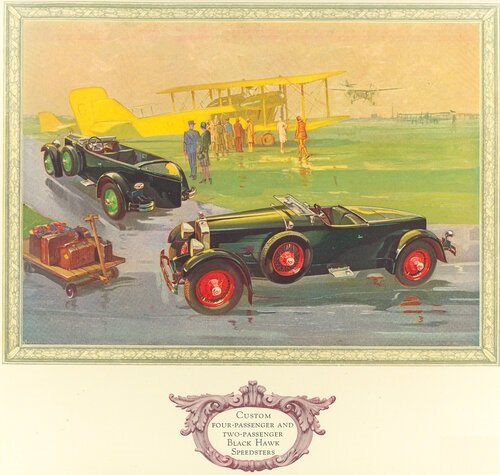






















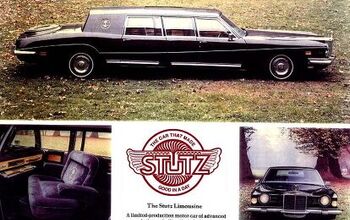

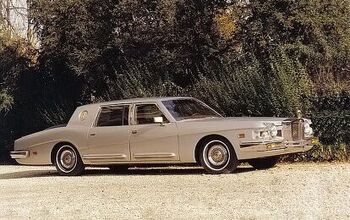
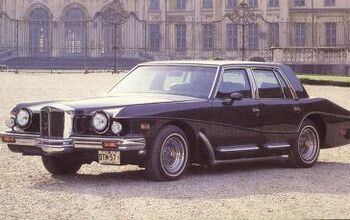
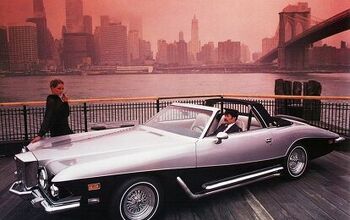










Comments
Join the conversation
Another interesting series, Corey! I appreciate all this backstory on these lesser-known marques.
That was an interesting article. Thanks! I found the Black Hawk brochure very beautifully composed and illustrated. The cover illustration represents a very abstract, almost fanciful, way of thinking about the car model they were trying to sell. One amusing tidbit was that Stutz boasted that the sundial hood ornament was designed by "one of America's best known sculptors". But I didn't see his or her name anywhere in the brochure. What was the story there? Who was it, and why not say so? Or was it just something made up to add prestige to the car?